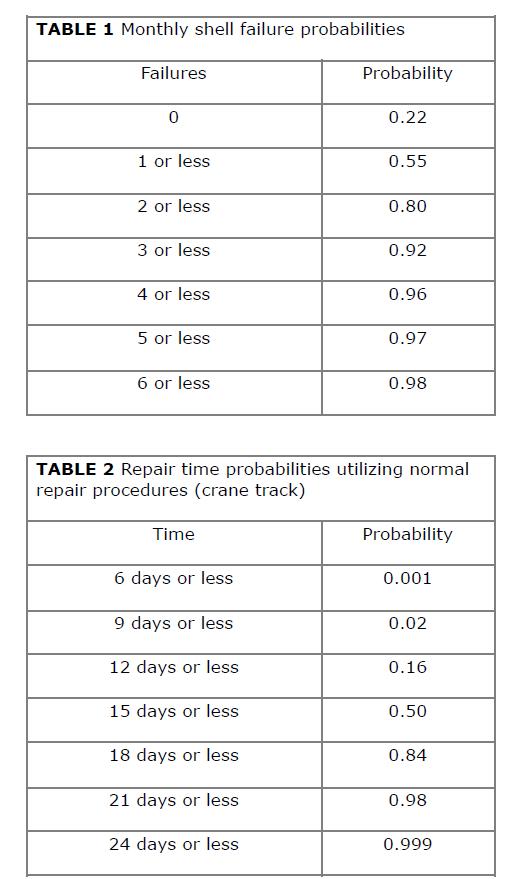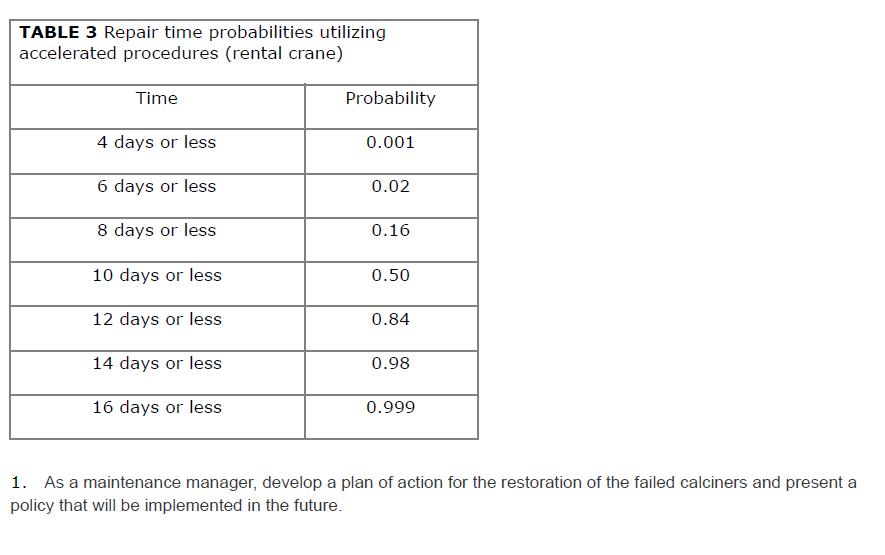Question
Buffalo Alkali and Plastics, a prominent producer of soda ash, began operations in the United States in 1880 using the Solvay Process. Buffalo, New York,
Buffalo Alkali and Plastics, a prominent producer of soda ash, began operations in the United States in
1880 using the Solvay Process. Buffalo, New York, was selected as the site for the soda ash operation
because of the close proximity of both brine wells (permitting solution mining of salt) and limestone
deposits. The initial complex was later expanded for the production of chlorine, caustic soda,
chlorinated solvents, industrial detergents, and polyvinyl chloride. Having experienced considerable
success in this initial operation, Buffalo Alkali and Plastics built eight additional plants in the central
and southern regions of the United States during the first half of the twentieth century. Even with this
diversification and expansion, Buffalo Alkali and Plastics' principal product continues to be soda ash.
Until the 1960s, soda ash was almost exclusively produced by the Solvay Process. However, huge
deposits of trona, or natural soda ash, have been discovered in Wyoming. (Trona ore is mined directly
and is purified by dissolution, evaporation, and recrystallization. Production costs for natural soda ash
are much lower than those for synthetic soda ash produced by the Solvay Process.) Thus Buffalo Alkali
and Plastics' plants remain competitive only because of their close proximity to markets. Freight
charges incurred in shipping soda ash from Wyoming to markets served by the synthetic plants tend
to offset the lower production costs of mining/purification operations. (Principally, soda ash is used in
the manufacture of glass by combining certain ratios of sand and soda ash and fusing the mixture
under high temperature.)
THE CALCINERS
Even when freight charges are considered, synthetic soda ash producers remain competitive with
trona producers only if their plants maintain high volume operations. Synthetic plants have large
investments in fixed costs and must sustain high production rates to remain above the breakeven
point. Area markets support these high rates. Glass manufacturers and other users of soda ash
consume the entire output of local synthetic plants and supplement this source of supply by
purchasing higher priced trona ash. Production rates for the synthetic plants are usually dependent on
the number of calciners (pronounced cal-ci-ners) available for operation. The Buffalo, New York,
complex has 32 calciners, each with a daily capacity of 100 tons of soda ash. The plant's 32 calciners
must be available for service to maintain maximum output.
THE PROBLEM
Because of the intense heat in the fire zone, the one-inch thick steel shell eventually is oxidized and
cracks. When this occurs, the shell is pulled from the brick housing and the burned-cracked section
(approximately 15 feet) is cut out and a new section is welded into place. The repaired shell is
reinstalled in the brick housing; drive mechanisms are attached; and the calciner is returned to
service. (Heat resistant alloys are judged to be impractical for this operation because of the enormous
cost and prolonged delivery dates for such alloy shells.)
The central problem for this operation is the determination of appropriate maintenance forces to effect
calciner repairs. A large number of recent shell failures has reduced the number of calciners available
for service to 25. A check of maintenance logs for the past ten years revealed 180 shell failures. Upon
further examination of these logs, monthly failure probabilities were developed. These are included in
Table 1. Repair procedures involve laying 100 feet of railroad track at the end of a failed calciner on
which a crane rides to remove the cracked shell. The repair procedure averages three weeks (15
working days) with a standard deviation of three days. A schedule of repair time versus cumulative
probability is in Table 2. (The dispersion is usually a result of working overtime.) The crane track
cannot be permanently installed at each calciner because of obstruction of other equipment repairs.
(Heat resistant alloys are judged to be impractical for this operation because of the enormous cost and
prolonged delivery dates for such alloy shells.)
The central problem for this operation is the determination of appropriate maintenance forces to effect
calciner repairs. A large number of recent shell failures has reduced the number of calciners available
for service to 25. A check of maintenance logs for the past ten years revealed 180 shell failures. Upon
further examination of these logs, monthly failure probabilities were developed. These are included in
Table 1. Repair procedures involve laying 100 feet of railroad track at the end of a failed calciner on
which a crane rides to remove the cracked shell. The repair procedure averages three weeks (15
working days) with a standard deviation of three days. A schedule of repair time versus cumulative
probability is in Table 2. (The dispersion is usually a result of working overtime.) The crane track
cannot be permanently installed at each calciner because of obstruction of other equipment repairs.
Repairs may be expedited, however, by renting a large mobile crane. The rental cost of this crane is
$1,500 per day with a minimum charge of $12,000 per rental. With the rented crane, two calciners
may be repaired simultaneously. Moreover, the average time for repairs using the rented crane is
reduced from three weeks to two weeks (ten working days) with a standard deviation of two days. A
schedule of repair times versus cumulative probability is included in Table 3. Other maintenance
material and labor costs for these two repair approaches (rented crane and installed crane) are estimated to be equal. Profit and overhead contribution from a ton of soda ash is estimated to be
$12.00.
TABLE 1 Monthly shell failure probabilities Failures Probability 0 0.22 1 or less 0.55 2 or less 0.80 3 or less 0.92 4 or less 0.96 5 or less 0.97 6 or less 0.98 TABLE 2 Repair time probabilities utilizing normal repair procedures (crane track) Time Probability 6 days or less 0.001 9 days or less 0.02 12 days or less 0.16 15 days or less 0.50 18 days or less 0.84 21 days or less 0.98 24 days or less 0.999
Step by Step Solution
There are 3 Steps involved in it
Step: 1

Get Instant Access to Expert-Tailored Solutions
See step-by-step solutions with expert insights and AI powered tools for academic success
Step: 2

Step: 3

Ace Your Homework with AI
Get the answers you need in no time with our AI-driven, step-by-step assistance
Get Started


